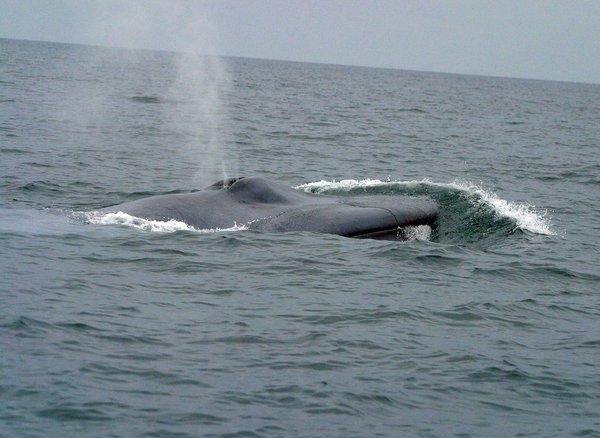Whale watchers touring the coast of Cape May got a rare glimpse of a blue whale — the world's largest animal — during a wildlife research trip earlier this month.
The sighting happened Sept. 12 on a tour led by the Cape May Whale Watch & Research Center. About 50 passengers were aboard the vessel American Star when the crew spotted a blow spout about a mile away from them.
MORE: Jorō spiders found in Bucks County, marking first reported sighting of the invasive species in Pa.
Once the boat got a bit closer, the whale's mottled gray and blue skin was a clear sign that the unusual sighting was legitimate.
"The blue whale was a once-in-a-lifetime wildlife opportunity for everyone on board," Melissa Laurino, the center's research director, told the Asbury Park Press. "We have a team of marine mammal and pelagic bird experts with many years of experience logging hundreds of pelagic trips that have never seen a blue whale in the Atlantic before this trip."
The center shared photos showing the blue whale in the water, in addition to other wildlife spotted during the trip.
September 13-14th 24hr Pelagic Trip Highlights: 🚨 1 BLUE WHALE!!! 🚨 We witnessed the largest living animal in the WORLD...
Posted by Cape May Whale Watch and Research Center on Sunday, September 15, 2024
Blue whales can be found in every ocean in the world, but they're most populous in the Southern Hemisphere. In the Atlantic Ocean, they're most often spotted in waters east of Canada, including the Gulf of St. Lawrence.
In the North Atlantic, blue whales can measure up to 90 feet long and sometimes weigh more than 100,000 pounds. Antarctic blue whales can grow even larger, reaching 110 feet in length and weighing up to 330,000 pounds, according to the National Oceanic and Atmospheric Administration.
An NOAA spokesperson confirmed to the Asbury Park Press that the creature seen off the coast of Cape May was a blue whale. They can be distinguished by a small dorsal fin on the lower part of their bodies and the aquamarine appearance of their skin underwater.
Laurino said the whale was in an area about 200 feet deep. It was alone and retreated underwater after it had surfaced for about 15 minutes.
Cape May Whale Watch & Research Center has conducted ecological tours of the Atlantic Ocean since 1987. The American Star is usually out on the water about 200 days per year. The researchers often spot a wide variety of wildlife — from dolphin and whale species to manta rays, sea turtles and birds — but the people aboard the boat earlier this month witnessed a first.
Blue whales are listed as endangered under the federal Endangered Species Act. The World Wildlife Fund estimates only 10,000 to 25,000 blue whales remain in the world, down from as many as 250,000 before whaling decimated their populations. They were the industry's most sought after whale species due to their size and economic yields for blubber oil and food. The species remains threatened by ship strikes, fishing gear, exposure to toxins and environmental change.
NOAA previously recorded three blue whale sightings near Montauk Point, New York in 2008.
"This rare event illustrates the incredible ecosystem off our coast," Cape May Whale Watch & Research Center wrote on Facebook.

